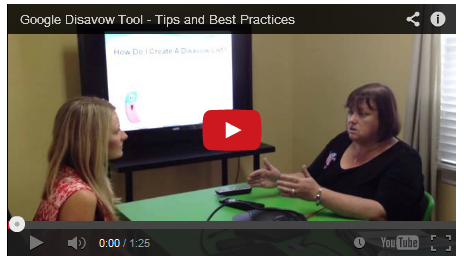Link Removal 101
Our team was thrilled to have Sha Menz, from Rmoov.com visit our office this week to discuss tips, best practices and techniques for identifying and removing negative links. Below I’ve share my top 5 takeaways to help you handle any link cleanup challenges you may be facing.
- Knowledge is Power; Learn, comprehend and continue to stay up-to-date on Google’s Webmaster Guidelines. Google has made several tweaks to the guidelines over the past few weeks and has yet to inform the industry so it is important to keep a close eye on this. Knowing and understand what Google is doing is key to managing your link network.
- Data is key: Before beginning your backlink analysis, be sure to export data from various tools to get a complete look at your backlink profile. Using tools such as Majestic, Moz, Ahrefs, Google Webmaster Tools, Google Analytics and Bing Webmaster Tools are highly recommended. Even tools like Google Analytics can help you understand how much referral traffic you are getting from links, and better quantify their overall value. Having a comprehensive view of your backlink universe provides a solid foundation for any linking (and link cleanup) strategy you develop.
- Be nice: Now that you’ve done the analysis, outreach is ready to commence. The golden rule of “kill em’ with kindness” applies here. While you may be frustrated and unhappy about any poor quality backlinks your site has, webmasters are people too, even the ones that manage those poor quality sites you are linked to. Be sure to be honest and polite in all of your correspondence and link removal requests as it will go a long way towards getting what you need accomplished.
- Disavow tip: When preparing the disavow list to upload, it’s recommended to add the domain vs. the linking page as a best practice. This is a proactive measure in the case of a website adding your link back on another page. Since you’ve disavowed the root domain, you’re covered.
- Be detailed: Here is your one chance to tell all to the almighty Google. Providing Google with details of what happened, what was done to correct the issues, and your plans for moving forward, is extremely important within the reconsideration request. Google wants to see that you took specific actions to correct the issues and that your future plan is focused on making a better site for your visitors.
I hope these 5 takeaways will help guide you along in your backlink removal journey and get you started in the right direction. Link removal can be the challenging but there is a light at the end of the bad backlink tunnel, using the right backlink removal tools and services can get you back on the right path. If you’ve received a manual action or noticed a drastic decline in Google traffic, contact us. Our link removal experts can help.
In the above video, Sha Menz and I discuss tips and best practices for using the Google disavow tool.
